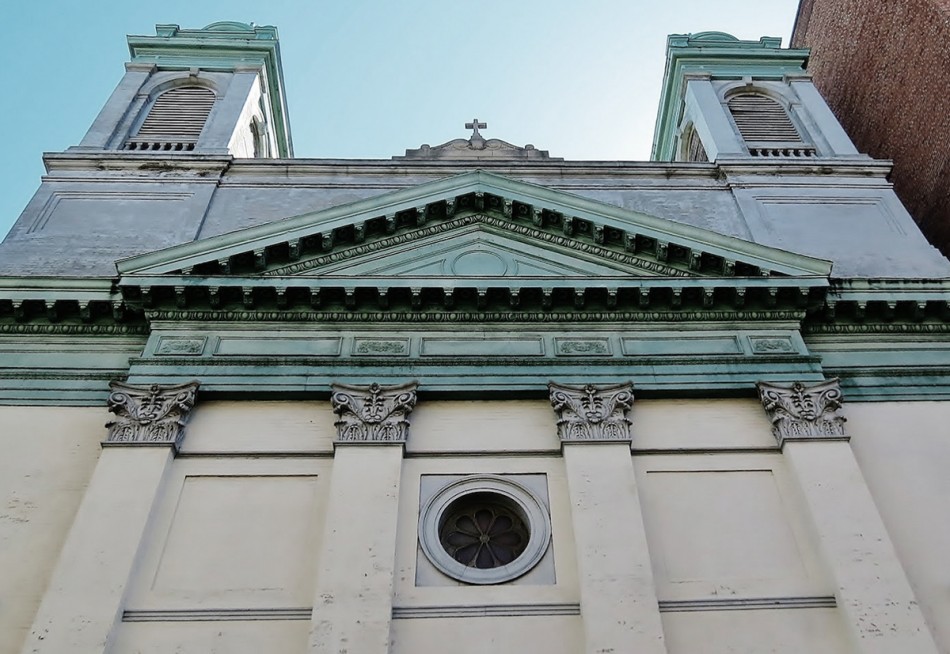This is the Mary Help of Christians on East 12th Street between First Avenue and Avenue A. It was built on the site of the old St. Patrick’s Cathedral, took six years to build and was completed in 1917. Modeled on the Basilica di Maria Ausiliatrice in Turin, the new church immediately became the spiritual home for a multitude of immigrant families in the then largely Italian community, and has grown as a place of social and cultural significance in the East Village for almost a century. In 1953 it was the venue for the wedding of FDR’s daughter, Sara Delano Roosevelt, and Anthony di Bonaventura, the son of a 17th Street Italian barber. The church is referenced in the poetry of Allen Ginsberg, who lived across the street at 437 East 12th Street for many years. The intersection of East 12th Street and Avenue A was renamed Father Mancini Corner in honor of Father Virginio Mancini, the church’s parish priest from 1949 to 1986. The church closed in 2007, but every evening for the past four years as I’ve walked past I have seen a small group of women huddled on its steps praying quietly in Spanish.
Earlier this year the church, rectory and neighboring school (essentially half a block) were purchased by developer Douglas Steiner, who soon revealed plans for “urban development.” “Urban retrogression” would be more accurate, because the specifics of the typically shortsighted project include the usual “prime retail opportunities” plus another non-descript, shoddily-built “luxury” glass condo, guaranteed to attract and house entire swarms of iPhone-gazing potential citibikers. Of course, it would have been far more lucrative in the long-term for Steiner to convert the historic structure for modern usage, but like most in his field he’s only after a fast buck.
Local residents and preservationist groups acted swiftly, appealing to the New York City Landmarks Preservation Commission that the historic structure be spared. The application was declined. This summer further protests against the demolition were held after fragments of a wall were unearthed which had originally formed part of the Catholic cemetery that predated the church. Among the 40,000-plus graves was that of Venetian librettist Lorenzo da Ponte, who worked with Mozart on Le Nozze di Figaro, Don Giovanni and Cosi Fan Tutte. Again these pleas also were rejected.
By now this type of story is all too familiar to New Yorkers. Over the last few years I’ve watched as renowned and beloved aspects of the city’s vast heritage have been unceremoniously wiped out, eventually taking entire communities with them. Such destruction (both physical and spiritual) is now becoming more frequent and increasingly reckless. What this all amounts to is nothing less than a corporate whitewashing of the city’s history, culture and character—ironically the very same character that is used to lure certain types (and you know which types I mean) into neighborhoods like this one.
I may be naïve or romantic, or maybe just European, but that a place of such architectural, cultural and social importance can be destroyed against the valid wishes of a fearless and vocal community extending far beyond the borders of the East Village, all for the greed-driven or politically-driven benefit of a clueless few, leaves me incredulous. Yet it is highly indicative of the culture that has been perpetuated by this city’s highest powers in recent years. The consequence is that many New Yorkers – the real kind, those that think for themselves and see straight through the bullshit – find themselves victims of what can be best described as a culture war. As the minority it should come as no surprise to us that our side is losing.

“The poets ’round here don’t write nothing at all, they just stand back and let it all be.”
